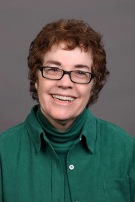 In this letter to the members, IAMCR president, Janet Wasko, reports on the IAMCR panel held at ECREA's conference in Lugano, Switzerland last month.
In this letter to the members, IAMCR president, Janet Wasko, reports on the IAMCR panel held at ECREA's conference in Lugano, Switzerland last month.
Dear Colleagues,
As you may know, IAMCR has established relationships with many regional, national and international organizations of media and communication researchers. Indeed, many IAMCR members are active in their regional groups and national associations, helping to maintain these international relationships.
One way that we interact with some of these organizations is through conference panel exchanges. For instance, IAMCR regularly organizes special panels at the conferences of the European Communication Research and Education Association (ECREA), International Communication Association (ICA), and Asociación Latinoamericana de Investigadores em Comunicación (ALAIC), and those associations present panels at our conferences.
In early November, IAMCR participated in ECREA’s 7th European Communication Conference, with a panel entitled, “Centers and Peripheries of Communication: Reflections by IAMCR Researchers,” in Lugano, Switzerland.
The panel generally addressed issues that related to ECREA’s conference theme, “Centres and Peripheries: Communication, Research, Translation,” but also included representative work by IAMCR members and presentations that provided background about IAMCR and its recent conferences. In this way, the panel served as an introduction for those unfamiliar with the association and as a reinforcement or reminder for others.
IAMCR@ECREA included Kaarle Nordenstreng (University of Tampere, Finland), who tied the ECREA theme directly to IAMCR, with his presentation entitled, “Centres and Peripheries of International Associations Exemplified by IAMCR.” Kaarle observed that the prevailing idea of “centre-periphery” is that a centre is something strong, active and abundant, while a periphery is weak, passive and scarce, but that this idea based on a simple paradigm of uni-directional power is misleading. There is another perspective, whereby centre needs periphery to legitimize itself and the relation between centre and periphery is dialectic, or multi-directional. As an example, IAMCR’s history provides evidence of how a globally dominant Anglo-American centre has not overwhelmed the periphery in smaller countries, especially in the global South, and how there has been a delicate interplay between the two parties. Kaarle concluded by noting that more in-depth work is needed on the sociology of science in our field.
Nico Carpentier (Uppsala University, Sweden) addressed the ECREA theme directly in his presentation, “Alternatives in the Centre: Alternative Media as Counter-hegemonic Forces and Producers of Multi-centredness.” He first discussed the traditional theoretical frameworks on alternative media, which has defined them through a relationist structure that distinguishes alternative media from mainstream media. Examples of alternative media’s counter-hegemonic content include experiments with formats and genres, horizontal decision-making structures and participatory dimensions. Nico’s presentation also included complications with this relationist model, by pointing to four elements that render alternative media diverse and moving away from a dichotomous to a multi-centered approach. These elements included the rhizomatic nature of the alternative; the always particular articulations of the alternative; the existence of alternatives within the mainstream; and, the structural reconfiguration caused by radical right wing alternative media.
The presentation by Francesca Musiani (Sorbonne Université, France) resonated well with Nico’s discussion of alternatives. In “The Politics of Internet (de-) Centralization: Peripheries, Centres, and their Implications for Networked Civil Liberties,” Francesca discussed her work on “centres and peripheries” in digital networks and the variety of forms and architecture of communications networks, including more centralized forms (Google, big server farms, etc.) vs. more decentralized architectures, where users and their terminals, thus the periphery of the internet network, “can do more things“ and be more in control of technical and social processes. These latter architectures are often be understood as “alternative“ or counter-hegemonic and counter-cultural in the ways that pluralism and diversity can counter the control and power of big actors.
Meanwhile, an historical approach to centre-periphery relationships was taken by Nelson Ribeiro (Universidade Católica Portuguesa, Portugal) in his presentation, “The Periphery Listening to the Centre.” Nelson looked at the peculiar broadcasting model that emerged in the Portuguese Empire, which featured radio programs that were produced in Lisbon, but only reached listeners in Africa and Asia through private radio clubs that were set up in the colonial territories. Even though most European countries with overseas territories used transborder transmissions in order to create “imagined communities” (Anderson, 1983), Portugal never achieved such coverage of their Empire. Nelson pointed out that the Portuguese model was far from being centralized and allowed for other voices – and not only those in the metropolis – to be heard over the airwaves. Private broadcasters that emerged in the African territories under Portuguese domain allowed those living in the colonies to speak to their peers, thus creating a model of communication that was not dependent on voices coming from the metropolis. This, however, did not represent any kind of empowerment of the peripheries as the stations only aired programs in Portuguese languages and were totally under the control of the white settlers. Programs in local languages only emerged in the late 1950s, designed to promote colonialism among those who did not know Portuguese at a time during which the war for independence was foreseen as inevitable.
Nico, Francesca, and Nelson’s work are only samples of IAMCR’s members’ research and deal with a few of the issues, areas and approaches that are regularly represented by our members. This diversity was especially apparent at the IAMCR 2018 conference in Oregon, as scholars considered a wide array of approaches and issues relating to “Reimagining Sustainability: Communication and Media Research in a Changing World.”
For the ECREA panel, Jeremy Swartz (University of Oregon, USA), IAMCR Environmental Impact Committee member and Oregon conference steward, presented “IAMCR 2018: An Environment Impact Assessment.” He linked the Oregon conference theme directly to the ECREA discussion by highlighting a question considered at the event: “What alternatives would advance full and equal access to diverse information and comprehensive knowledge bases as components of sustainable societies?” Jeremy’s presentation reviewed not merely the multi-disciplinary sustainable policies and practices implemented at the conference, but how the overall experience also featured the blending of traditional lectures with time-based media (opening), local community groups and sustainable companies (Ecofair), artists and designers’ work that recontextualized media (Ecomedia fest), as well as ecologically-based choices for themes, panels, and sessions, the sources of food for meals, use of recyclable and compostable materials, and carbon offset options.
To conclude the panel, the 2019 IAMCR conference in Madrid was highlighted, emphasizing the theme, “Communication, Technology and Human Dignity,” which also can be interpreted to include issues related to centres and peripheries.
The IAMCR/ECREA panel was well attended this year and elicited interesting questions and follow-up discussions, demonstrating the value of these type of activities. We look forward to planning future events at other organizations’ meetings and welcome your suggestions for these type of interventions.
Best wishes,

Janet Wasko
President, IAMCR